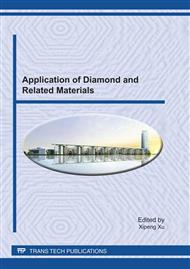p.183
p.187
p.192
p.196
p.201
p.206
p.211
p.215
p.219
Effects on the Bending Strength of Metal-Bonded Diamond Segments in DEM Simulation
Abstract:
An attempt was taken to simulate the bending strength of diamond impregnated segments in three point bending tests by using a discrete element method (DEM). The influences of main bond matrix components (Fe and Cu), the porosity in the matrix, the coefficient of friction among the matrix particles, and the connection strength between abrasive particles and matrix particles on the bending strength were investigated through simulation. It is found that the bending strength increases with the proportion of Fe but decreases with the increase of porosity. An increase in both the friction coefficient of the matrix particles and the bonding strength between the diamond grains and metal matrix particles can also lead to the increase of bending strength.
Info:
Periodical:
Pages:
201-205
Citation:
Online since:
June 2011
Authors:
Keywords:
Price:
Сopyright:
© 2011 Trans Tech Publications Ltd. All Rights Reserved
Share:
Citation:


